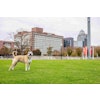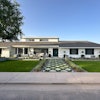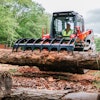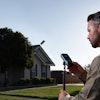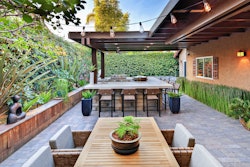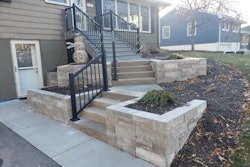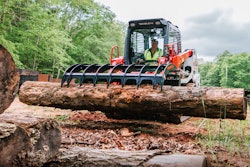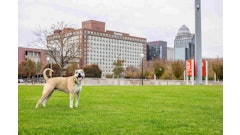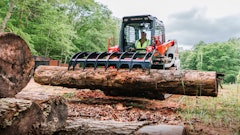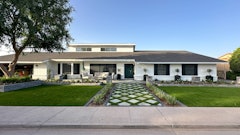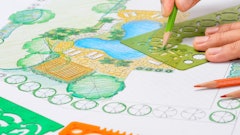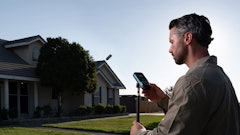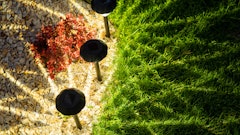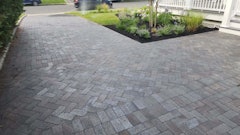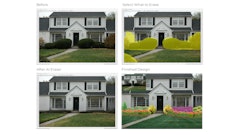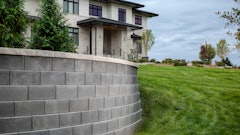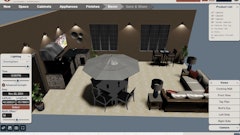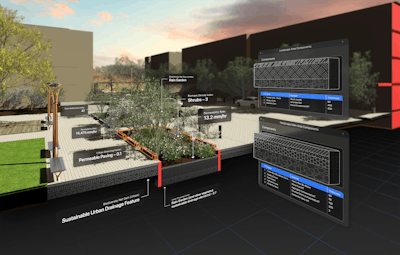
The landscape industry is progressing, and the focus on sustainability, biodiversity and technology is reshaping how professionals approach their work. In 2025, these trends will continue to redefine industry practices, emphasizing innovation, efficiency and a deep connection to environmental stewardship. Here are some key trends transforming the landscape industry in the coming year.
Redefining landscapes: Biodiversity and water efficiency in focus
Traditional turf lawns, once a staple in landscape design, are giving way to native plants and turf mixes such as tall fescue and microclover that better support local ecosystems. These species enhance biodiversity and require less water and fewer maintenance products, reducing dependency on fertilizers and pesticides.
California's Model Water Efficient Landscape Ordinance (MWELO) and LEED/SITES' Water Efficiency objectives, for example, have driven designers to adopt water-conscious practices. Advanced tools allow professionals to calculate precise water budgets and evaluate irrigation efficiency, enabling compliance with stringent standards. These measures address the growing need for sustainable water management, particularly in regions facing drought and water scarcity.
The shift toward resilient landscapes emphasizes creating self-sustaining ecosystems that benefit pollinators, improve soil health, and reduce urban heat islands. By blending function with environmental stewardship, landscape professionals can ensure their designs thrive in a changing climate.
The rise of AI and advanced tools in landscape design
Artificial intelligence (AI) and advanced technology will continue revolutionizing landscape design. AI tools enhance workflow efficiency by automating routine tasks, optimizing designs and analyzing complex datasets. This shift enables professionals to focus on creativity and strategy while maintaining precision in execution.
Cloud-based collaboration tools are also becoming indispensable, streamlining team collaboration. Data interoperability ensures that all project stakeholders work with accurate, updated information, reducing errors and improving project outcomes.
Meanwhile, parametric design tools enable designers to manage complex projects efficiently. By aligning multiple design elements and scenarios, these tools support the seamless integration of environmental, aesthetic and functional goals.
Immersive client-centric experiences
The demand for immersive experiences is reshaping client engagement in landscape design. Virtual reality (VR) technology allows clients to explore and interact with landscape models, providing a vivid sense of space and scale. These tools impress clients and foster better collaboration, enabling informed choices and reducing costly changes during construction. This trend underscores a shift toward more inclusive, client-centric design processes, where visualization tools bridge the gap between concept and reality.
Sustainability in action and nature-inspired design
Sustainability has evolved from an aspiration to a mandate, and the United States is embracing this shift with various initiatives and regulations. Many municipalities now require or incentivize sustainable practices such as green roofs, rain gardens, and bioretention systems to manage stormwater and promote environmental resilience. Washington, D.C., has implemented its Green Area Ratio to ensure landscape features contribute to urban sustainability, while Chicago offers zoning incentives for green roofs. Additionally, ordinances in some areas mandate native plants, recognizing their role in supporting local ecosystems and biodiversity.
Landscape designers are leveraging advanced tools to align with sustainable design expectations. Software platforms are incorporating sustainability dashboards and carbon footprint calculators to simplify evaluating a project's resource efficiency and environmental impact. Free tools like Climate Positive's Pathfinder provide actionable insights, enabling professionals to make informed, real-time decisions. By combining these technological solutions with a deeper understanding of community expectations and regulatory requirements, landscape professionals can ensure every project contributes positively to sustainability goals while meeting modern standards.
Additionally, nature remains the ultimate guide for resilient, carbon-conscious design. Biomimicry—drawing inspiration from nature's systems—has become a key trend in landscape architecture, encouraging the development of regenerative landscapes that mirror natural processes. Design tools are becoming increasingly available and more intelligent to help designers quantify carbon impacts and make smarter, low-impact decisions, such as selecting sustainable materials or planning for carbon sequestration through tree planting and soil regeneration. By integrating carbon-conscious principles with nature-inspired design, the industry is reducing its footprint and embracing resilience and efficiency that align with global sustainability goals.
Shaping tomorrow's landscapes today
As we look toward 2025, the landscape industry is at a transformative turning point where sustainability meets technological innovation. Professionals are focusing on biodiversity and creating spaces that enrich the human experience and AI, VR and immersive experiences to redefine the design process. These tools enable designers to expand their knowledge, visualize outcomes and enhance client engagement while addressing the pressing needs of our environment. By integrating these technologies with immersive experiences, landscape professionals can ensure their designs are innovative, efficient, and resonate with their clients' visions and municipality's requirements.
The future of landscape design, installation and maintenance is about more than responding to change—it's about actively shaping a sustainable and resilient world. The path forward is one of creativity and responsibility to leave a lasting impact on future generations.

